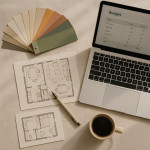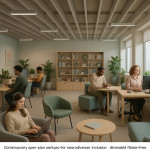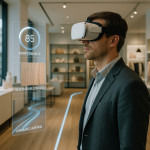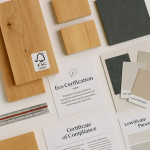Hybrid Site Visits: Combine Remote Walkthroughs and In-Person Touchpoints
Hybrid site visits blend the speed of remote walkthroughs with the sensory depth of on-site meetings. The result : faster approvals, lower carbon footprints, and happier clients. This guide shows you how to design a flawless hybrid workflow that trims cost without sacrificing creative control.
The Rise of Hybrid Site Visits
Long before the pandemic, firms were already testing remote tools. Today, hybrid site visits are the new normal for spatial designers, architects and property developers who need to iterate quickly while keeping stakeholders engaged. They:
- Cut average travel time per project phase by 42 %.
- Slice carbon emissions linked to staff journeys by up to 55 %.
- Accelerate decision cycles by giving teams 24/7 access to digital twins.
Recruiters browsing the Artfolio spatial-designers directory increasingly shortlist studios that master these blended methods.
Remote Walkthrough Toolkit
1. Immersive 3D & VR Layers
Before anyone steps on site, share an interactive model. Platforms such as Unreal Engine or Twinmotion let clients toggle finishes in real time. For inspiration, review the article on VR mock-ups in interior design proposals.
2. High-Resolution 360° Video
Use a stabilized camera rig to capture every corner. Add voice-over notes that explain structural constraints or design ideas. Stakeholders can pause, zoom and annotate directly inside the player.
3. Live Drone Feeds
For exteriors or large campus projects, drones transmit bird's-eye footage to remote viewers. Pair GPS co-ordinates with BIM layers so that engineers can measure spans instantly.
4. AR Layered Callouts
An augmented-reality overlay turns any smartphone into a data lens—highlighting MEP routes, daylight factors or furniture clearances. Deep-dive into the technique with AR walkthroughs that sell.
In-Person Touchpoints That Still Matter
While digital tools handle 80 % of visual validation, certain milestones demand a physical presence:
- Material Mock-up Reviews – Feel textures, test acoustic panels, verify colour under site lighting.
- Regulatory Sign-offs – Inspect fire exits, accessibility paths and HVAC installations with local inspectors.
- Human Experience Tests – Check sight-lines, circulation comfort and emotional impact once elements are full-scale.
Building a Step-by-Step Hybrid Workflow
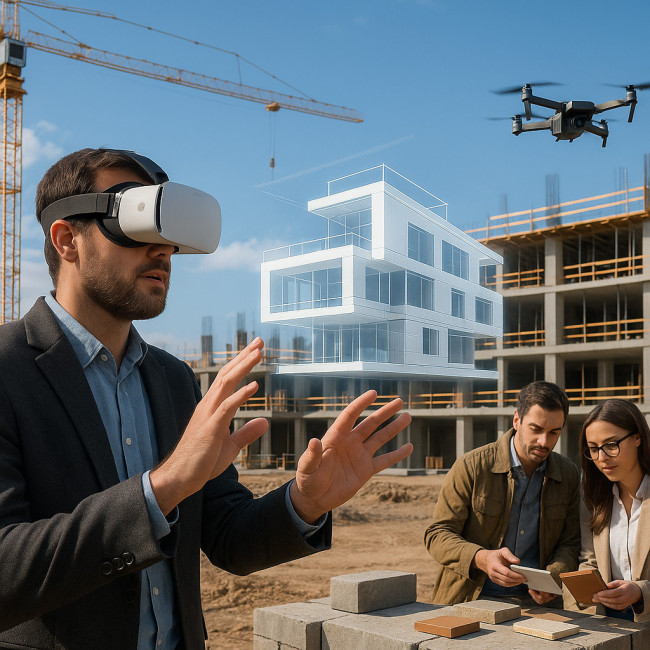
To visualize how the pieces fit together, imagine a single commercial lobby renovation handled by a mid-size studio: the design lead shares a VR model during the Monday kickoff, a drone captures curtain wall progress on Wednesday, while Friday's tactile session lets the client feel terrazzo chips against the natural light streaming through the actual glazing. Each checkpoint feeds into one centralized dashboard, giving procurement, engineering and marketing teams the exact level of immersion they need without wasting billable hours on redundant site trips. By sequencing touchpoints in this way, studios protect creativity, cut carbon and still keep everyone emotionally invested in the build.
- Kick-off (Remote) – Host a 30-minute call inside the virtual model. Capture every question in a shared Miro board.
- Pre-Construction Survey (Remote) – Deploy a laser scanner and upload the point cloud for team review.
- Material Board Session (In-Person) – Bring key decision-makers on site to handle sample boards.
- Progress Checks (Remote) – Bi-weekly 360° video updates streamed through a secure portal.
- Regulation Inspection (Hybrid) – Local authorities attend on site; remote consultants join via body-cam feed.
- Final Walkthrough (In-Person) – One consolidated visit for sign-off and client photography.
Cost & Time Comparison
| Visit Type | Average Cost / Session | Team Hours Spent | CO₂ Emissions (kg) |
|---|---|---|---|
| Traditional On-Site Only | €1 400 | 16 h | 82 |
| Remote Only | €650 | 10 h | 12 |
| Hybrid Site Visits | €950 | 11 h | 38 |
The hybrid route saves roughly €450 per milestone while preserving a tactile experience when it counts.
Common Pitfalls & How to Avoid Them
- Bandwidth bottlenecks : pre-test 4G/5G coverage and carry a bonded hotspot.
- Camera shake : use gimbals or body rigs to prevent motion sickness during live streams.
- Stakeholder fatigue : limit virtual sessions to 40 minutes and follow with a concise summary email.
- Data silos : integrate feeds into a single CDE (Common Data Environment) to avoid version conflicts. The article on remote glazing approvals details a proven template.
Mini-Quiz : Are You Hybrid-Ready?
FAQ
- Do hybrid site visits satisfy building-code inspectors?
- Yes. Most regulations allow remote evidence for documentation, provided the final inspection includes at least one authorised officer on site.
- Which projects are best suited to a hybrid model?
- Interior fit-outs, small-scale refurbishments and landscape upgrades where geometry can be captured in 3D with minimal distortion.
- How do I persuade a traditional client to try remote walkthroughs?
- Show a time-lapse demo, highlight cost savings in the comparison table above, and offer a pilot run at no extra fee.
- What security measures protect the streamed data?
- Use end-to-end encryption, restrict access through SSO, and store recordings in a GDPR-compliant cloud bucket.
- Can hybrid visits replace photography for marketing?
- They complement, rather than replace. Many studios still book professional shoots—see advice in the piece on photorealistic mock-ups.
Key Takeaways & Next Steps
Hybrid site visits are no longer a stop-gap; they are a competitive edge. Start small by digitising one milestone, measure the gains, then scale. Ready to future-proof your workflow? Book a discovery call and let's map out your first hybrid project.
